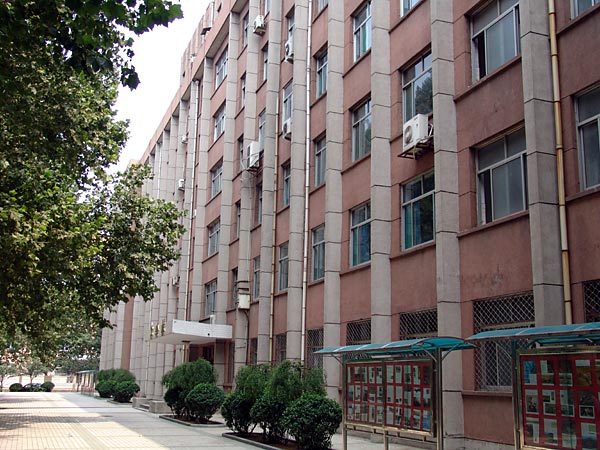
July 11 - 27
Teaching in Jinan - Part II

This is the "Teaching Building" where our classrooms are
located. We weren't able to use them until Wednesday, July 11, because they were needed
for final exams for the regular students at Shandong Institute. We
could finally start teaching in the manner we had planned for, rather than having
to adapt to the large lecture hall. Our schedule for the rest of our time in Jinan is that we teach in separate rooms in this building in the morning and go
back to the large air-conditioned lecture hall in the afternoon when it is
hotter.
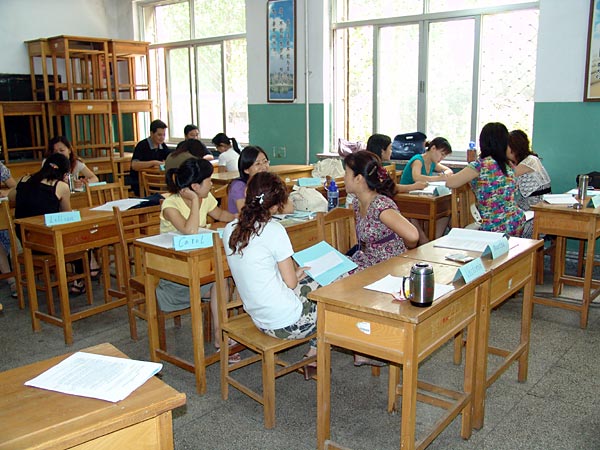
A typical classroom. Each class has about 20 students, so
interacting with the students is much easier. In all except one of the
classrooms the furniture is movable so we can rearrange it as needed. We usually
have them work in groups as much as possible to give them time to practice
communicating with each other in English.
In Chinese schools the normal procedure is that the students stay in one room and the teachers move to a new classroom for each class period. We have decided to use the American system where a teacher has a classroom designated for them and the students change rooms with each class period. We named the classes after American states (California, Texas, Florida, New York, Maine, and Wisconsin) so they wouldn't be able to figure out which level we assigned the students to (beginning, intermediate, or advanced), although some of them may have been able to figure it out by now.
I have noticed some behavioral differences between students in America and our students here, which probably they learned when they were students in school. When asked a question in class, they will stand up to answer it. Also, they are very reluctant to raise their hands and ask a question. Some of the students will come up to you afterwards to ask a question about something they didn't understand, if there is time. Apparently, they are reluctant to interrupt the flow of the lesson, or are hesitant to ask in front of other students.
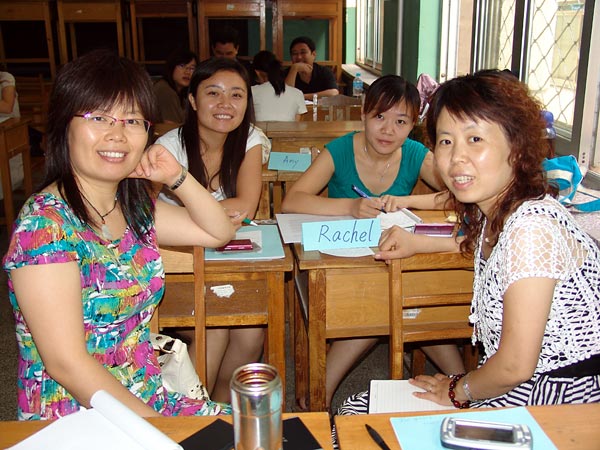
It is a pleasure to have eager students, such as these; they are
very appreciative of the time you spend with them. We have the students put
name-cards on their desks so we can associate names with faces. All the students
have an English first name, as well as their real Chinese name. Chinese who
interact with foreign visitors, or who teach English, usually have an English
name. Sometimes it was given to them by their English teacher in school, or they
chose it themselves because it represented something they liked, like flowers
(Lily was a common English name), or they liked the sound of it.
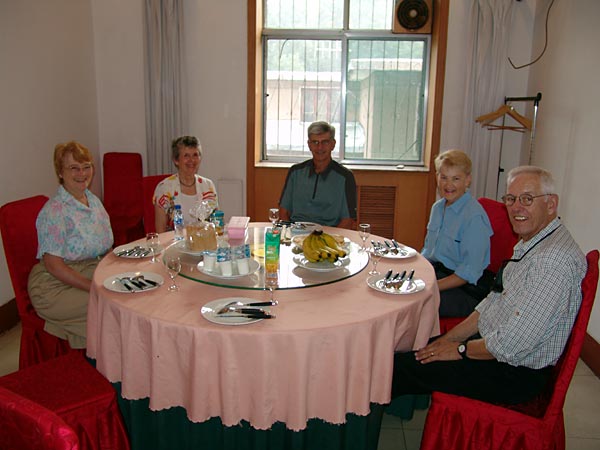
Unless we are away from campus, all our meals are in this room, which is reserved for us. Note the round table with the lazy Susan on it. They put the food on it and we turn it to get what we want. It is very convenient, except that we have had to learn to make sure that handles of serving utensils are not sticking out, or they will knock over your glass and spill it when someone turns the lazy Susan. Lazy Susans such as this are very common in China; we have had them in every restaurant except two where the food was served buffet style. Note that we have western eating utensils as well as chopsticks. We have gotten better with the chopsticks and use them for most foods.
We do a lot of coordination of activities and teaching during
the meal time since it is one of the few times when we are all together and
nothing else is going on.
Linda wrote a song for us to sing at meals for grace,
"We are glad to be in China teaching today
We want to spread your love throughout each day
We're thankful for this food
And pray that we will use
Its strength to help us teach, as best we may."
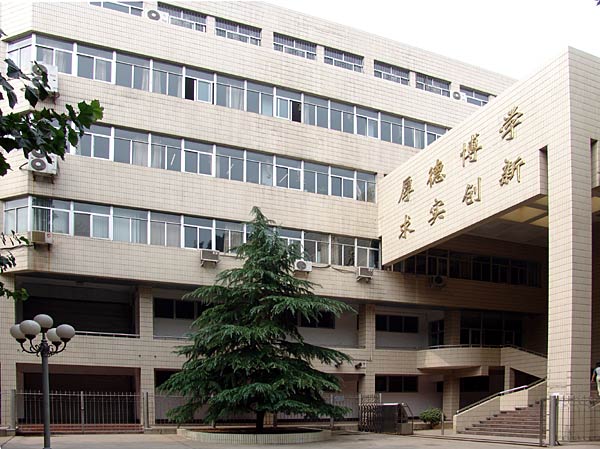
Our afternoon classes are in the lecture hall we used the first day; they are in this building. The lecture hall has the advantage of being air-conditioned, but the disadvantage of having fixed seating with little room to do anything in the way of activities.
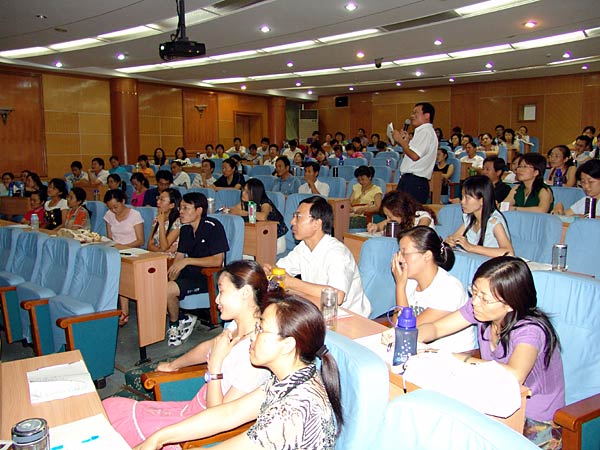
For the second and third week of classes we decided to ask the
more advanced classes to organize and conduct the English corner period. We
thought that it would give them the experience of organizing an English corner,
so that they could then do something similar in their schools. Leading off with
this activity was the New York class, which gave the students a list of topics
and split them into groups to discuss one of the topics on his list. Ben is
going around asking the various groups to report on their discussion.
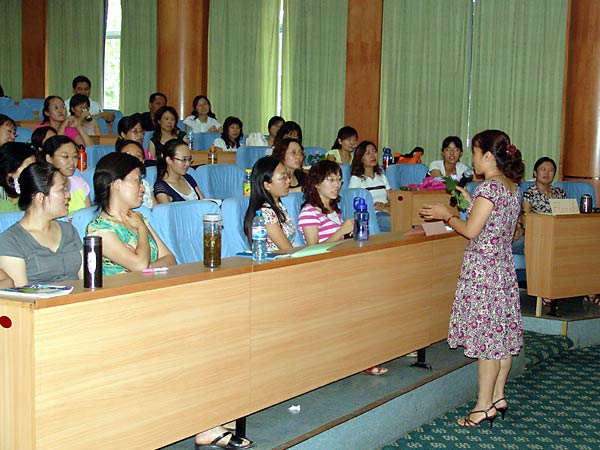
In another English corner period, the Florida class decided to
have a series of activities with the different states competing against each
other. Martha is explaining the rules for a particular activity.
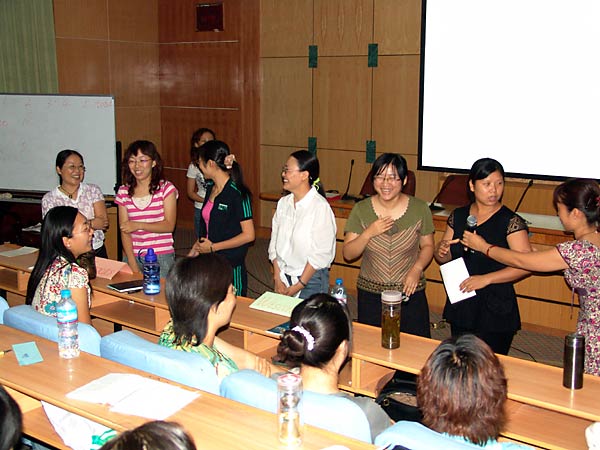
In this activity, each class sends a student forward to
represent them. They are to read and say out loud an English tongue twister,
while judges decide who said it best.
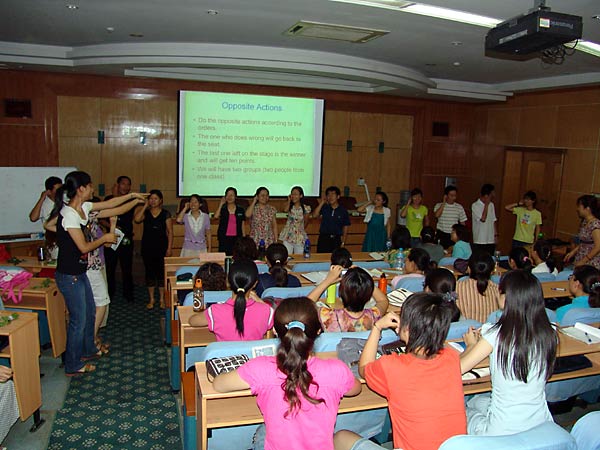
In this activity the students are to do the opposite of what the
person leading it says.
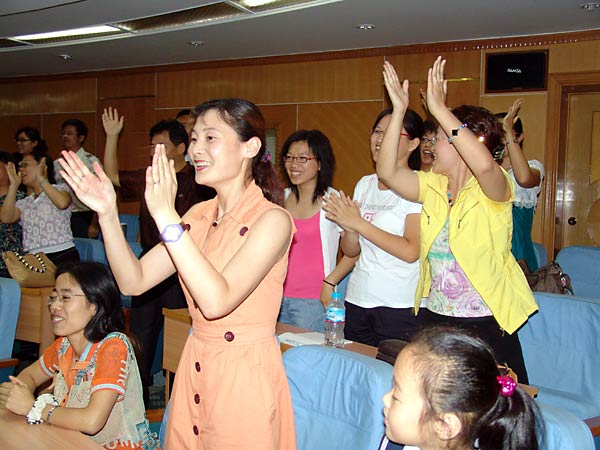
Having a competition between the states (classes) generated a lot of enthusiasm; you would think you were at a sports event for all the cheering going on. Here, it has just been announced that New York is the overall winner for the period; they are cheering the good news.